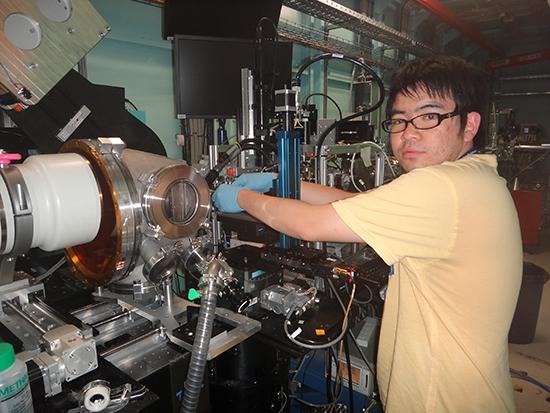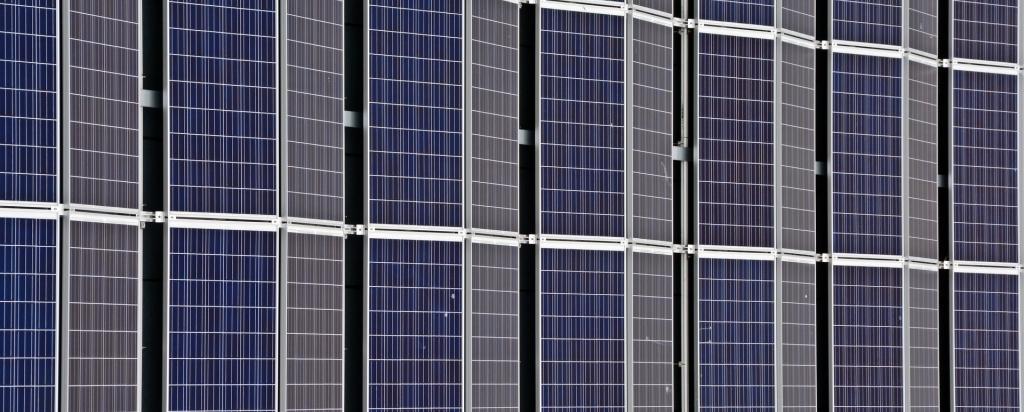

Published on the 24th November 2016 by ANSTO Staff
A young Melbourne researcher has helped lay the groundwork for an environmentally-friendly electronics revolution, defining the complex chemistry that could see affordable, translucent, printable solar panels moulded and shaped to adorn home windows and office towers.
Dr Wenchao Huang today received the 2016 Australian Synchrotron Stephen Wilkins Thesis Medal for his research at Monash University into organic photovoltaic (OPV) devices, exploring how critical microstructural features evolve during the preparation of cutting-edge, clear and pliable solar panels, which are tipped to surpass older, silicon-based panels in value and performance over the next decade.
Associate Professor Chris McNeill from the Faculty of Materials Science and Engineering at Monash University says Dr Huang’s research balanced the activity of two key solar panel components.
‘In the active layer of a polymer solar cell, you have the polymer donor – which absorbs sunlight and generates electron-hole pairs – and the fullerene acceptor, which transports electrons to electrodes.
‘Under different circumstances, the polymer can become crystallised, which makes charge transport and light absorption more efficient, but reduces the probability that electrons will be successfully transferred to the fullerene, which has a negative effect on power conversion efficiency; experimenting with heat treatment and additive solvents, Wenchao used the Australian Synchrotron’s Soft X-Ray Spectroscopy (SXR) beamline to find a workable balance that we believe will make OPV’s more commercially viable.’
Dr Huang, who has since winged his way to new opportunities in the United States at the University of California, Los Angeles, says the key to bringing next-generation solar cells into our homes and workplaces is maximising the power conversion efficiency.
‘Silicon has had a huge head start – coming into play in the 1950s while organic solar cells appeared in the mid-1990s – yet commercialised single-crystal silicon solar cells convert around 18-20 per cent of energy from the sun into power, next to 12 per cent for organic.
‘We anticipate it will be only years, not decades, until organic takes the lead, costing around half or one-third to produce.’
Associate Professor McNeill says the team at the Australian Synchrotron provided crucial molecular analysis as broader techniques of the ongoing research were developed, which could impact Australia’s green energy future.
‘We believe the upscaling of OPVs will enable faster development of next-generation solar panels and electronics that are flexible, malleable and more affordable, beyond the limitations of bulky silicon-based electronics.
‘The ability to incorporate solar panels into clear windows on houses, skyscrapers and stadiums is a very attractive prospect as Australia works towards a sustainable energy mix that maintains output and reliability while lowering carbon emissions.’
Professor Andrew Peele, Director of the Australian Synchrotron and ANSTO Victoria, says through research opening up new pathways for innovation that delivers real-life benefits, Dr Huang is a worthy recipient of the medal, which is named in honour of synchrotron pioneer Stephen Wilkins.
‘Science is about turning big ideas into innovations that change our world, and Wenchao has embodied this spirit by tackling a complex technical issue using synchrotron science in a way that could revolutionise affordable, renewable energy.
‘The thesis medal honours Stephen Wilkins’ creativity and his devotion to nurturing the next generation of scientists, and we wish Wenchao well as he builds his career in the United States.’
The Australian Synchrotron Stephen Wilkins Thesis Medal is awarded annually to the PhD student at an Australian or New Zealand university judged to have completed the most outstanding thesis of the past two years and whose work was undertaken at and acknowledges the Australian Synchrotron or the Australian National Beamline Facility.